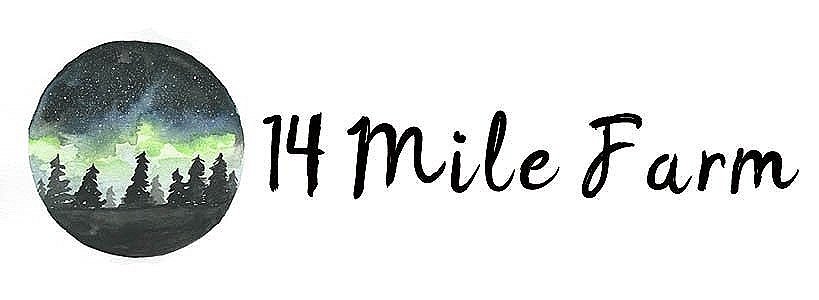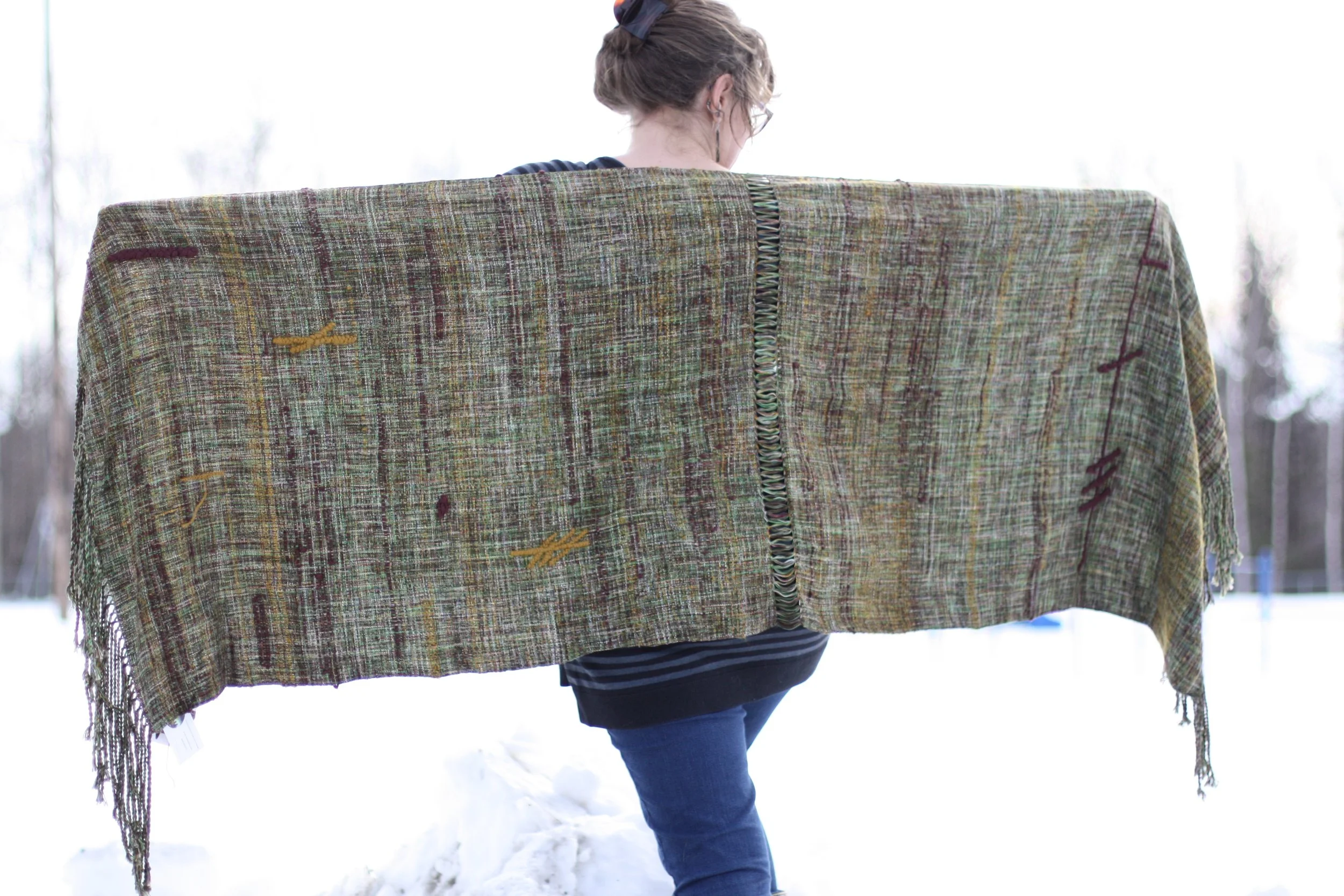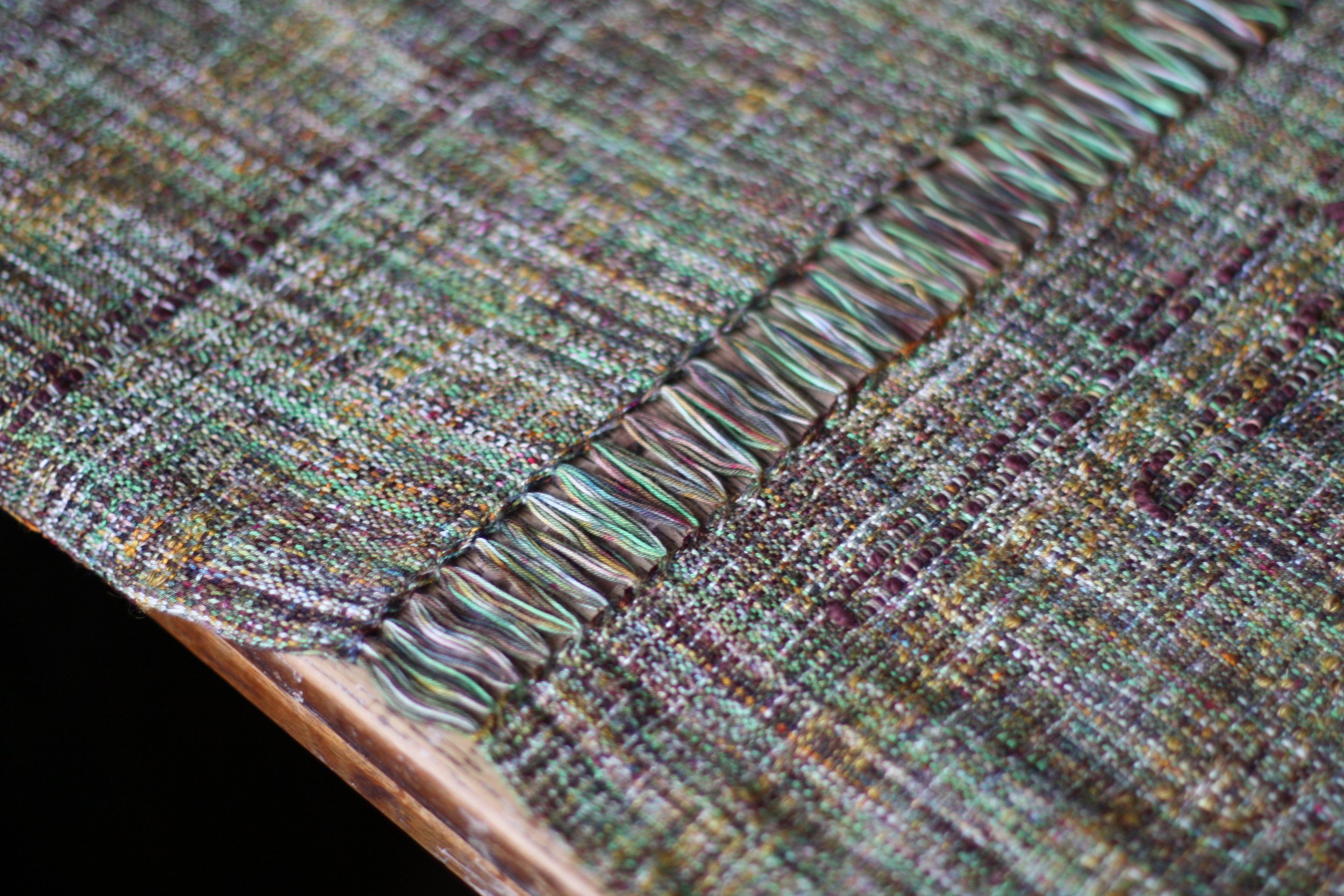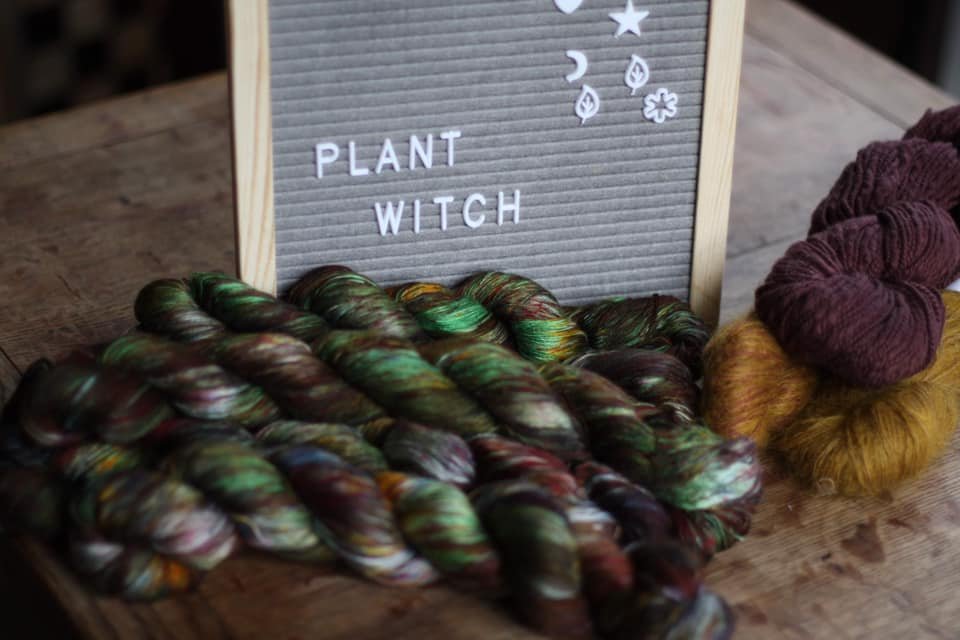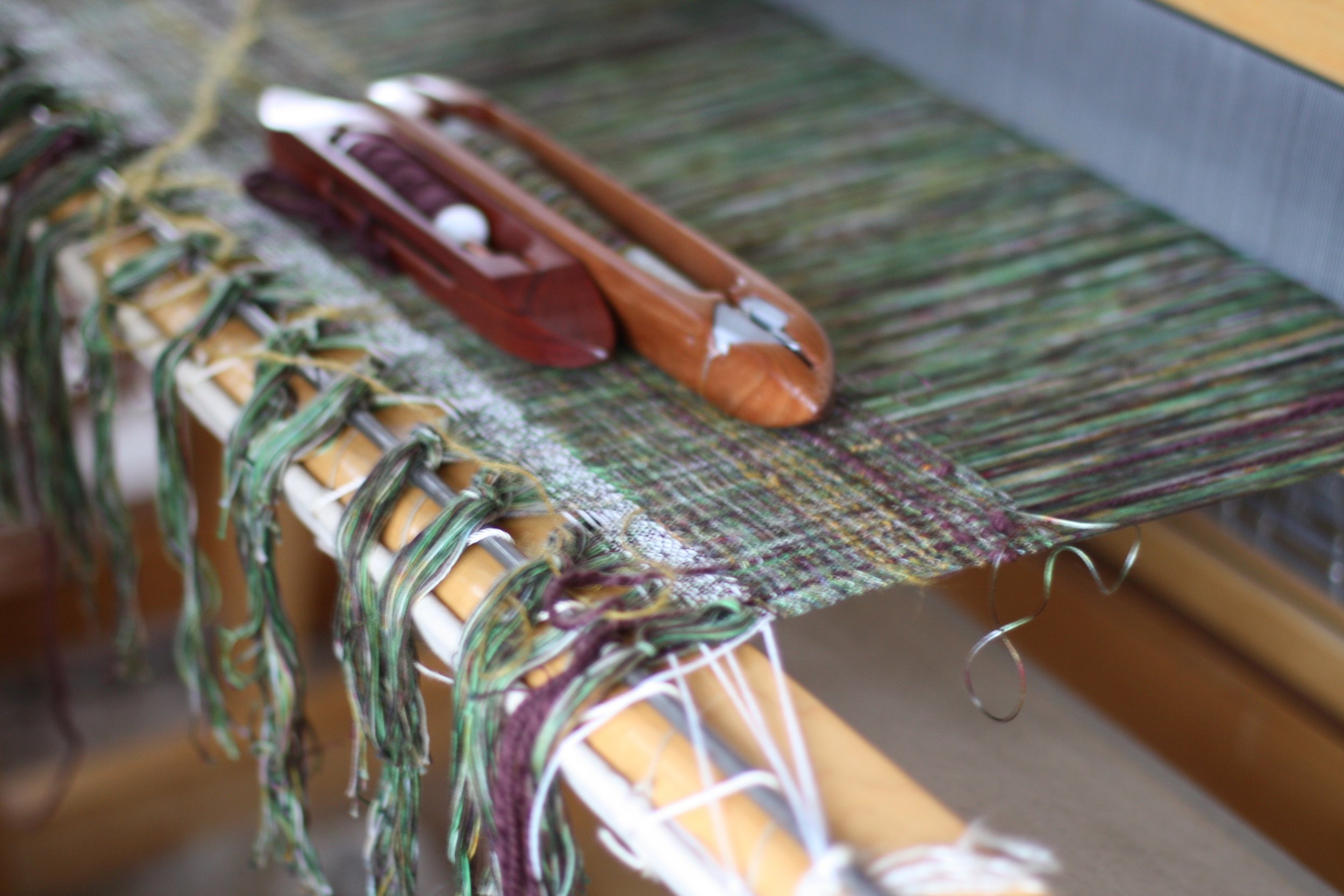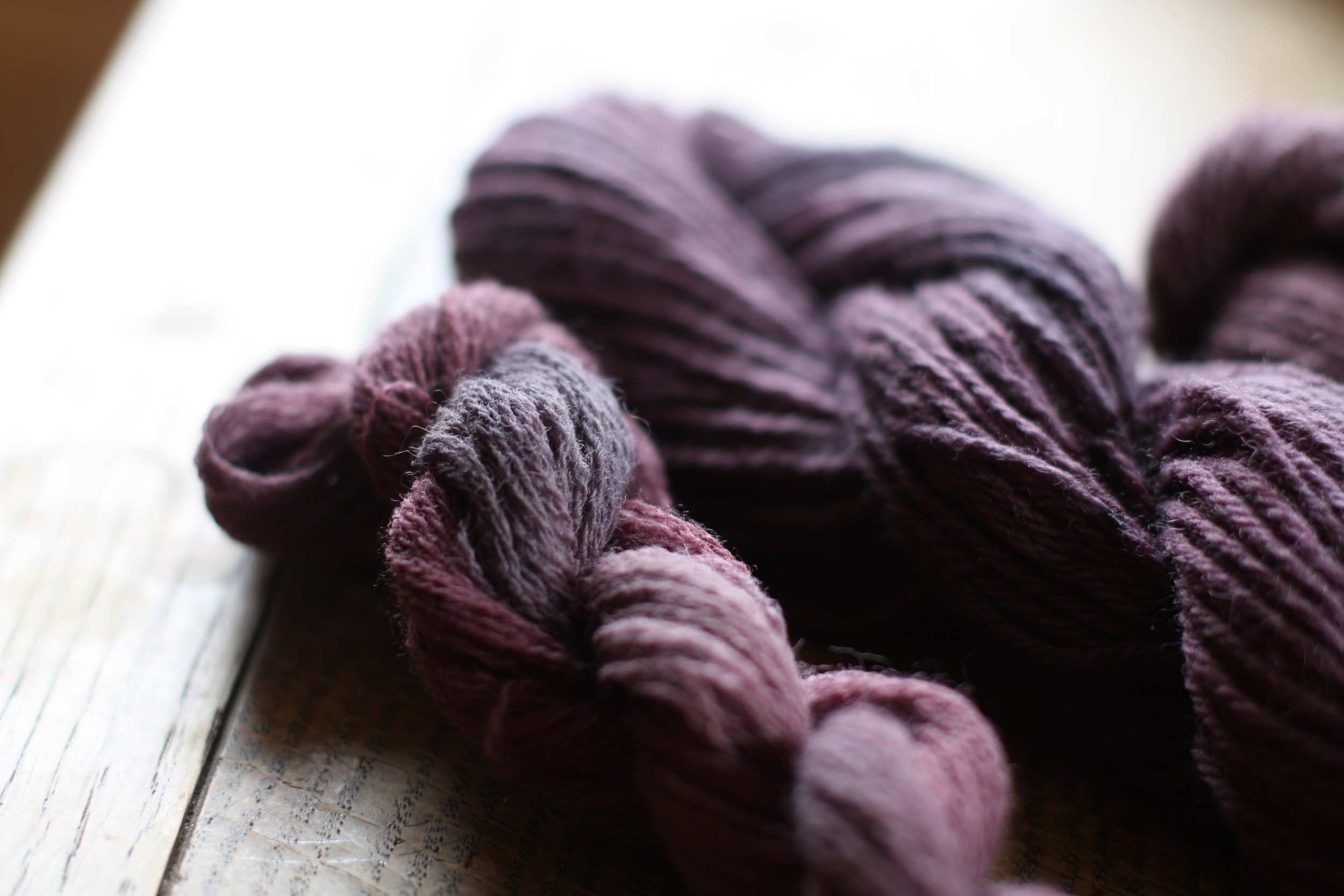Welcome! Please feel free to subscribe to the newsletter to get studio updates and projects from the archives straight to your inbox.
Plant Witch: Birch Bramble Reed accepted into "Entanglements" at FAA
Plant Witch: Birch Bramble Reed was accepted into the Fairbanks Arts Association juried show “Entanglements” this spring. The First Friday reception is this week, Friday April 1, from 5-7 pm. It will be on exhibit in the Bear Gallery through the end of April and available for purchase through the gallery.
Warp: Hand dyed long staple Supima cotton warp
Weft: Hand dyed rose viscose weft
Inlays: linen/mohair and Pima cotton
The ogham inlays in the piece represent birch, bramble, and reed for beginnings/new growth, harvest, and renewal..
The ogham for birch - beithe, symbolizes beginnings and new growth. It’s the joy of baby sprouts, of digging into still cold earth to plant this year’s crops, it is the hope and optimism of the beginning of the growing season.
The ogham for bramble - muin, symbolizes harvest, fruitfulness, and feasting. It’s perhaps the most iconic and eagerly anticipated phase of the garden’s cycle, providing the #plantwitch with ample opportunity to relish in their baskets and buckets and handsfull of produce.
The ogham for reed - ngetal, symbolizes renewal and healing, it stands in here for the fallow season of the garden after the lasts of the harvests.
Plant Witch represents the magic of growing things: seeds unfurling deep underground at Imbolc, sprouting at Ostara, blooming at Beltane, growing through Litha, harvesting at Lammas, preserving the bounty through Mabon, and deepening the compost at Samhain.
Tending a garden, cultivating houseplants, chatting with wild plants, befriending plant allies. Food and flowers and medicine and dye.
19 seconds of sunlight
The day after winter Solstice's longest night is 19 seconds longer than the day before. These fleeting moments of light and visual warmth are precious where we live, just below the arctic.
We make a meal of salmon on the Solstice, we gather round the Yule tree and we share gifts of love to lighten the heart. The salmon's life is a potent symbol of rebirth, and this meal honors the cyclic nature of the season. Salmon return in the last year of their lives to the rivers and streams where they were spawned, spending the last of their life energy in spawning the next generation.
Every summer, when the days are long and the nights are oh so short, we journey to the river where the salmon are, we harvest gratefully the lives they offer and bring them home to our freezer. Our dipnets wait under the snow for the next season, and the salmon feed our bodies and lift our spirits through the dark and the cold.
Natural Dye Experiments
Every year, my local weaving guild plants and tends and harvests a dye garden at the University's botanical gardens. Every year at the end of the summer, the guild hosts a dye day from the plants they've grown. For one reason or another I've never made it to the dye day, though I've put in some hours weeding the garden from time to time.
This year, I made it as far as mordanting* the wool to dye, and when life intervened and I missed the event, I was left with nearly two pounds of mordanted wool on my hands. What to do? Why, go to the woods of course!
I wrapped my berry pie baby up on my back and she reached over my shoulder as I harvested a pot full of rosehips, another of alder cones and leaves, another of yarrow. We pulled chaga** from the cupboard - I never do seem to make tea out of it as I intend to - and put that to boil as well. My husband brought home some chokecherries from a red barked Canadian chokecherry tree that grows on campus.
As I simmered the plants and then simmered the wool in their dyebaths, first my kitchen and then my whole house began to smell delightfully of the woods. It was a few-day process of stirring, soaking, simmering, and cooling the wool during which I thoroughly felt myself inhabiting the archetype of the witch in the woods. I loved every minute of it.
The rosehips yielded the most delicate neutral with a hint of rose gold. The alder gave me a lovely beige, the chaga a deep antique gold. And the chokecherry gifted me with the loveliest purple I have ever seen!
So now I have a pile of naturally dyed skeins with which to play! I dyed three different wools - a quite fine laceweight, one that is perhaps fingering weight, and a partial cone of 100% Shetland wool that is a little thicker than the one and a little thinner than the other. I'm anticipating cowls on a warp or two this winter and I'm quite tempted to put some on a tapestry loom as well.
I'm looking forward to next year's dyepots!
*Mordanting is a process of treating wool (and/or other protien fibers) to prepare it to take color from naturally found sources (plants, fungi, etc). It is an archaic word that happen to adore. One of the most common mordants, and one of the safest, is alum which is a mineral salt. I was unhappy with one of the dyebaths that I ended up experimenting with. I took those skeins and overdyed them. Some I re-mordanted and some I did not. The difference was quite striking! The skeins that had been re-mordanted for the second dyebath took the color so very much better.
**Chaga is a wild fungus that can be found growing on birch trees which has medicinal effects in both an infusion and/or decoction (water extraction) and a tincture (alcohol extract).
